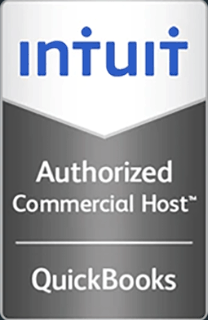Cloud Migration Essentials: What is IaaS? (And Why You Should Care)
Adam Stern | Healthcare Business Today
As a group, small and midsize medical offices tend to be wired for DIY. Self-reliance runs deep, which is why many small hospitals, clinics and medical practices still manage their own technology – servers, routers, other networked gear. That said, the times, they are a-changin’ and, increasingly, growing medical enterprises are looking to move to the cloud – and bring their applications with them, especially via IaaS, Infrastructure as a Service.
At its most basic level, IaaS enables medical practices to move all or part of their compute environment to the cloud (that is, off premises), and to make the migration without modifying any of their existing applications. The market is now awash in IaaS tools and technologies, empowering medical practices that may lack traditional computing resources to benefit from remarkably robust products and platforms.
In the mushrooming world of the cloud, IaaS is distinguished from two other “as a service” models – Software as a Service (SaaS) and Platform as a Service (PaaS). Without getting mired in terminology, SaaS is essentially a software rental model, where individual applications are hosted – again, off-premises – for a monthly subscription fee. As an application delivery model, just name your vertical: SaaS has become a virtual supermarket for business software, from the generic to the highly specialized – accounting, human resources, content management, customer relationship management, enterprise resource planning, and vastly more, addressing niches within niches. All users need is a web browser and they’re good to go.
Platform as a Service, PaaS, is somewhat more ambitious while remaining steadfastly user- (and application-) specific. PaaS is ideal for medical enterprises writing applications that are specific to their business – and they don’t need to build and maintain the infrastructure usually required to develop and launch app. PaaS makes it possible, even easy, to develop applications rapidly with little technical know-how – applications that aren’t intended to be sold but that run on a single, captive platform. If the platform for which the app was written changes or ceases to exist, however, users are out of luck. With PaaS, internal development teams are compelled to ride the IT rollercoaster, forever investing and reinvesting in platform-specific application development.
Taken together, all three service segments represent an enormous market – something north of $40 billion today, en route to $170 billion-plus within the next decade – and dominated by the likes of Amazon, Microsoft, IBM and Salesforce.
But for most small and midsize medical offices, that’s not where the action – or the real service – is. While some medical practices are likely to continue buying hardware, the pace of cloud migration continues to accelerate as more and more applications become cloud-ready and IaaS becomes the new normal. Users – real people, not professional technologists – can now deploy their own apps and manage their own security, without the aid of NYSE-listed companies.
So why should you care? What’s the impetus to finally migrate to the cloud and IaaS? A medical office reaches that fork in the road because it has pushed its servers to the end of their useful lives and now needs to do something about it. IaaS is in fact a gift to the “IT-less” – those by definition without a formal, information technology infrastructure, and/or the personnel to maintain and manage it. In the IaaS model, cloud servers and prefab packages effectively supplant technology professionals.
Savvy small and midsize practices are recognizing that their incumbent (that is, not-yet-virtualized) applications will become out of date all too soon. And when that day dawns, their best option will clearly be to migrate to cloud-based IaaS applications.
Increasingly, the numbers favor the cloud — and numbers are just part of the equation. Indeed, the cloud is something of a bargain. Because IaaS requires zero outlay for computer hardware and (typically) modest monthly fees for applications and maintenance – with such under-the-hood essentials as storage, backup, security, disaster recovery, round-the-clock support, etc. baked in – the economic argument is compelling. With depreciation cycles taken out of the equation, compute horsepower truly is a bargain. It’s entirely possible for a small or midsize medical office to spend $10K a month and tap enough compute power to drive a 1,000-user organization – certainly more than most actually need, but a comforting statement about economies of scale.
And since IaaS is, for lack of a better term, holistic, it’s inherently flexible. With the entire compute environment in the cloud, clinic and hospital employees can access applications and data wherever they are. While some practices lose money thanks to ineffective technology management – a byproduct of the technology buy/deploy/depreciate/junk cycle – IaaS sidesteps that entirely. Neither does HIPAA compliance need to be a burden. Cloud-based HIPAA hosting plans incorporate technologies that ensure compliance, providing what medical practices and small hospitals need most in today’s regulatory environment.
In sum, then, the right question isn’t, “Should I go on or off premises?” The smart question is, “what’s strategically best for my medical practice?” When you frame the query in that manner, you can determine where to place your compute power, and you begin to gain control over the dynamic. Want to reduce costs? Increase efficiencies? Achieve some other objective?
While the rationale for IaaS is persuasive for many, it’s important to be strategic about the decision to migrate to the cloud. First, decide what your metrics are and how they serve your medical practice — then select the technology. Go back to basics. Otherwise, the tail wags the dog.





